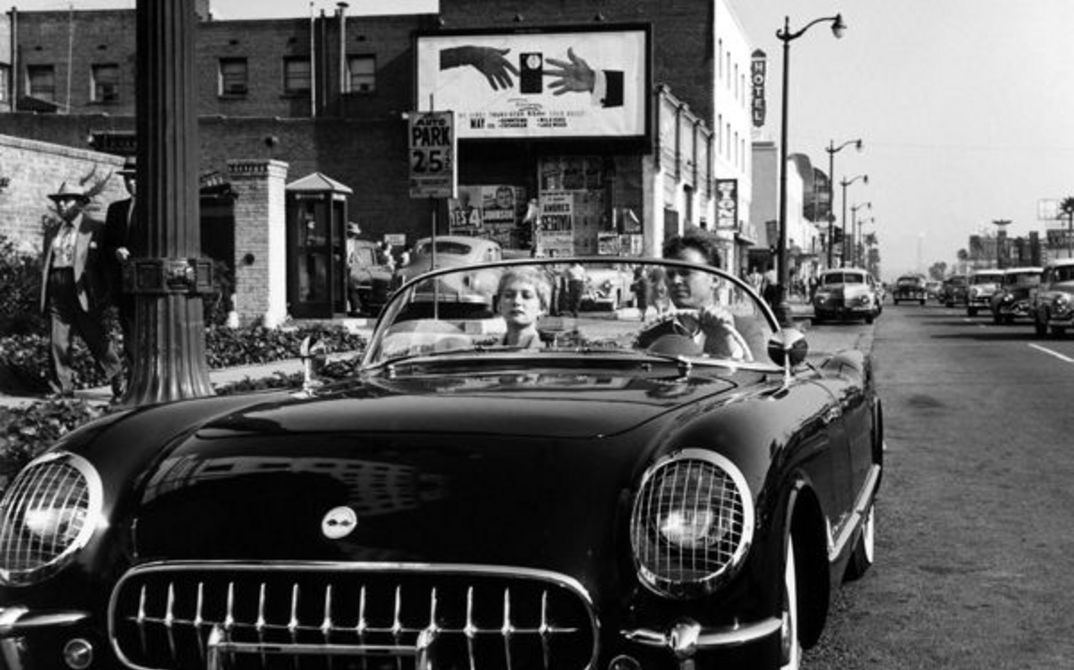The films from 1951 to 1998 chosen by Jan-Christopher Horak show different aspects of the hugely diverse set of coordinates that make up urban life in Los Angeles. Capital of the American film industry for over 90 years, L.A. is also repeatedly the location for self-examination, parody, and self-referentiality, as can be seen in SMOG, REPO MAN, SHORT CUTS and THE BIG LEBOWKSI. Los Angeles as the origin of and natural setting for film noir is reflected in late works of the genre such as CRY DANGER and KISS ME DEADLY, while the first stirrings of an American independent film can be seen in PRIVATE PROPERTY.
Yet Horak’s view of the UCLA collection also brings films like THE EXILES, KILLER OF SHEEP or RUN, TECATO, RUN to the fore, which examine L.A. with a documentary gaze and turn the diversity of the city population into their central theme by placing the lives of African-Americans, Native Americans or Latinos at the heart of their narratives.
PRIVATE PROPERTY (Leslie Stevens, USA 1960, 7.12., with an introduction by Jan-Christopher Horak) Two good for nothings chat up a sexually frustrated housewife. Leslie Stevens’ controversial debut film PRIVATE PROPERTY was shot on a minimal budget of 60,000 $ and was declared by Variety magazine to be "a possible forerunner of an American 'Nouvelle Vague'". At the same time, the Catholic Legion of Decency condemned the film for its depiction of seduction, rape, and latent homosexuality. The film made 2 million dollars at the box office despite being ignored by the major distributors.
THE EXILES (Kent MacKenzie, USA 1961, 8.12. with an introduction by Jan-Christopher Horak) Like many other Native Americans, Yvonne and Homer have moved from the reservation to Los Angeles. Homer is unemployed, while Yvonne spends her days window shopping and daydreaming. With neo-realistic precision, Kent MacKenzie observes their daily routine, which is both cutoff from their Indian roots and traditions and lacking a certain future.
KILLER OF SHEEP (Charles Burnett, USA 1977, 8.12.) Working at a slaughterhouse is exhausting for Afro-American Stan, whose job alienates him from his family and barely allows him to earn enough to survive. KILLER OF SHEEP was shot at original locations in South Central Los Angeles with non-professional actors and a handheld camera, conveying a profound intensity in how it portrays both moments of humor and moments of despair. The film is a timeless humanist document and an ode to urban existence.
SMOG (Franco Rossi, Italy 1962, 9.12.) is an atmospheric mediation about the drastic sense of alienation felt within the class-riven society of sprawling Los Angeles, seen through the eyes of outsiders: an Italian lawyer visiting the city and several Italian ex-pats. Remarkable scenes show famous modernist architectural monuments like the Los Angeles Airport and the Stahl House, designed by Pierre Koenig.
RUN, TECATO, RUN (Efraim Gutierrez, USA 1979, 9.12., with an introduction by Jan-Christopher Horak) Based on a true story, RUN, TECATO, RUN depicts how a drug addict tries to wean himself off heroin and once again take responsibility for his daughter’s upbringing. Produced independently on a budget of 60,000$, the film shines a light on the connections between the Vietnam War, drug addition, and criminality and juxtaposes them with the family life and spirituality of a Mexican-American family in Los Angeles. RUN, TECATO, RUN was the last of three low-budget “problem films” by Efraim Gutierrez, who didn’t just take on the leading role, but also managed to reach bigger audiences than Hollywood films in several cities via a grassroots distribution strategy.
CRY DANGER (Robert Parrish, USA 1951, 10.12., with an introduction by Jan-Christopher Horak) Dick Powell plays an ex-con who has returned to Los Angeles in search of the gang that put him in prison for a crime he didn’t commit. With the help of a crippled and constantly drunk ex-marine, he sets up home at a trailer park on Bunker Hill and meets his ex-girlfriend Nancy there, played by Rhonda Fleming. According to Eddie Muller, President of the Film Noir Foundation, CRY DANGER is an unusual crime thriller: “short, smart, cheeky, and full of surprises”.
KISS ME DEADLY (Robert Aldrich, USA 1955, 11.12.) Robert Aldrich’s film noir shows private detective Mike Hammer pursuing different dubious characters who are all trying to get their hands on a small suitcase of immeasurable value. The hugely successfully film was regarded as Hollywood’s strongest statement on the Cold War and the nuclear threat.
REPO MAN (Alex Cox, USA 1984, 12.12.) Harry Dean Stanton plays a debt collector on an existentialist tour through an industrial, post-apocalyptic Los Angeles. At the highpoint of the Reagan era and its vision of Los Angeles as a pacific metropole of the free market, Alex Cox’’s dark science fiction comedy reimagines the city as teetering at the edge of the void.
THE BIG LEBOWSKI (Joel Coen, USA 1998, 13.12.) Having fallen victim to a group of blackmailers by mistake, "The Dude" Lebowski sets out to make some investigations. This comedy by the Coen Brothers became a cult film and makes numerous allusions to the Los Angeles of private detectives such as Philip Marlowe, with Jeff Bridges playing an aging hippie bumbling his way through a web of corruption and hubris that stretches from the San Fernando Valley all the way to Malibu.
SHORT CUTS (Robert Altman, USA 1993, 14.12.) Altman’s predilection for elliptic narration and his unsentimental relationship to his characters enters into a more than happy partnership with the short stories of Raymond Carver which form the basis of the film. A series of unconnected city dwellers battle with the entropy of their lives, careers, marriages, and affairs in a seemingly happy Los Angeles that seems to primarily consist of swimming pools and nightclubs. (jh, pm, mk)
An event with the friendly support of the Berliner Senatskanzlei.



